Unity in art refers to how the different elements within a painting work together to create a cohesive whole. This unity plays an important role in forming visually pleasing works of art that draw viewers into their scene.
In this blog post, we will discuss unity in art, providing examples and exploring the visual elements of unity such as line, colour, texture, shape, form and space, then we will also look at how other design principles such as balance, pattern and variety overlap with unity.
Disclaimer: Fine Art Tutorials is a reader supported site. When you make purchases through links on this site, we may earn a small commission at no extra cost to you.
Definition of unity in art
Unity is a principle of art and design. It refers to how all the components of a painting come together to appear unified. Separate sections of an artwork can appear cohesive or disjointed, based on how the artists has used different elements in an image. Unity in art is the quality of how each visual element relates to another. When visual elements share similarities, the image as a whole appears connected in appearance and message.
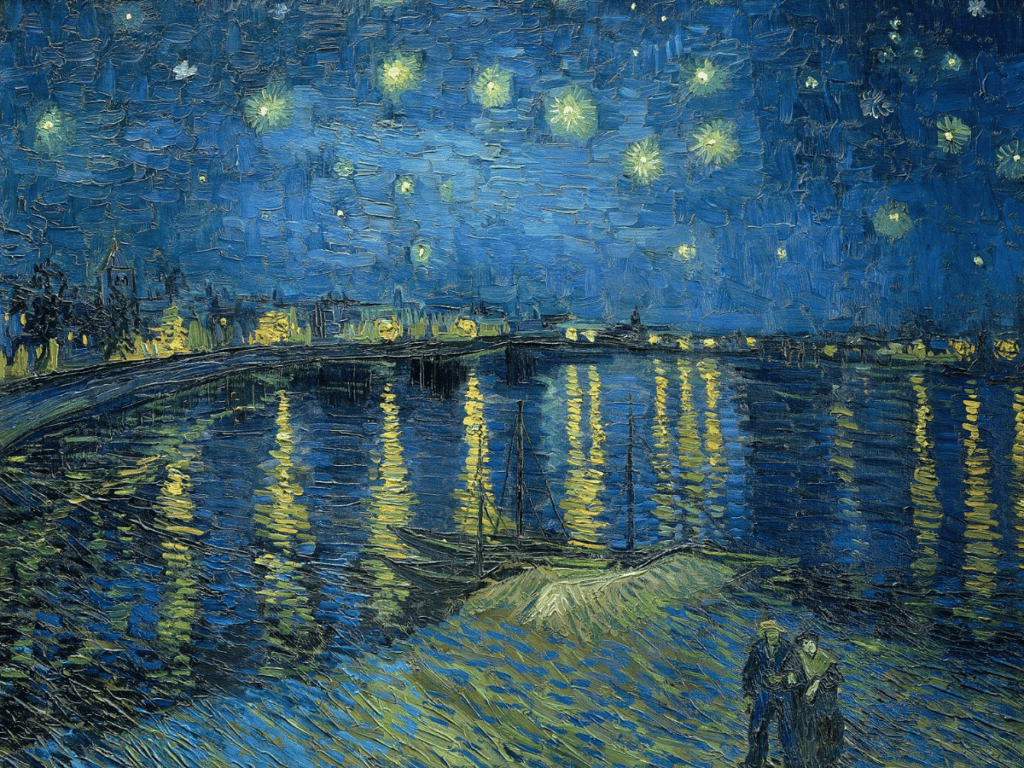
To achieve unity, the artist must carefully consider how the elements of a painting interact. Then, they can use techniques such as contrast, repetition, pattern, simplicity, symmetry and proximity to create unity. Unity does not mean that all elements should be identical. Instead, it is about creating a harmonious relationship between the different elements in a painting.
Looking at the example of ‘Starry Night over the Rhone’, Van Gogh has used repetition in the textured impasto brushstrokes. The brushstrokes connect different subjects and objects of the piece. This in turn creates an immersive world of swirling colours. The impasto technique also works to simplify details in the piece, which reduces the variety of different sections.
Another way that Van Gogh has achieved unity in this painting is by the limited colour palette of yellow and blue. Similar tones and hues can be seen in the people, boats, distant buildings and sky which unites them. There are many other ways you can describe sections of this painting as being united. For example, the pattern of stars in the sky that have similar shapes and the regular spacing between the stars. Equally, the proximity of the figures to each other makes them appear as one unified section.
The visual elements of art and unity
Understanding the visual elements and how they relate to the principle of unity helps the artist to create cohesion between different parts of a painting. The visual elements in art are line, colour, texture, shape, value, form and space. It’s these constituent elements that are arranged to make a whole. Depending on the appearance and visual weight (how dominant) the element is, artists can create different effects. Using methods such as creating repetition between elements, simplifying elements, or making elements closer in proximity will make the image as a whole appear more unified.
Unity with line

Line is an element that artists use to lead viewers around the painting and create unity through repetition and simplicity. By using more simplified or repeated lines in the piece, artists can create a unified appearance. For example, artists may keep the thickness of lines consistent in the artwork. Or they might repeat the use of curving lines to unify different areas. For example, Cezanne paints the branches of trees with wispy, broken lines. This unique way of painting branches creates a sense of movement, but also connects the different areas of foliage in the piece, which leads the viewer’s eyes around.
Create unity with colour

Similarly, colour is often used to unify a painting’s composition. This is because the repetition of similar colours unifies and connects areas that they are used. Using a colour scheme can create visual unity in a painting. By selecting various colours and using their extended tonal range in a painting, you can create cohesion through the simplicity of using fewer disparate hues.
The tetradic colour scheme of ‘River in Saint Clair’ by Henri Edmond Cross creates a sense of warmth and unity. Cross used colours that are dissimilar in hue to create variety, but repeats these colours in the grasses, trees and mountains. to create unity The intensity of the red tree creates salience and a focal point, whereas the muted tones in the grass and sky provide a sense of visual relief for the viewer. The reflected colours in the water create symmetry, repetition and therefore unity in the piece, which overall produces an aesthetically pleasing effect.
Create a similar effect in your own art by preselecting a colour scheme, like analogous or complementary, then simplifying the image with this limited colour palette. Make sure to keep the value range of the image realistic looking, so that the altered colour palette does not look overly surreal. When using a colour scheme, make sure to use the tints, tones and shades of each colour to create variety. Also use a mixture of muted and saturated tones so it appears balanced. The balance and colour harmony of a piece is in the interplay between the variety and unity of colours used.
Unity and texture

Artists use texture to create unity in a painting by uniting the different parts of the painting with textural elements. For example, an artist may use a combination of textures in a landscape painting to create unity across the entire canvas. Use texture to denote grassy areas of a painting, or short sharp strokes of a palette knife with the impasto technique to add dimension to the rocky outcrops of a mountain. Monet uses brush strokes and thick paint to unify the contrasting colours of the sunset and the silhouette of the buildings.
Shape and unity

Contrast can be created by using different types of shapes in the artwork, for example, simple shapes next to more complex shapes, or large shapes and small shapes. Large shapes carry more visual weight than small shapes but complex shapes carry more visual weight than simple shapes. Balance, harmony and unity can be created in the composition of a design or artwork by including similar shapes throughout the design. Artists can balance similar sized or shapes of similar complexity by creating a symmetrical design, for instance.
Lowry unifies different subjects and objects in this painting by simplifying the details and complex shapes.
Value and unity in art
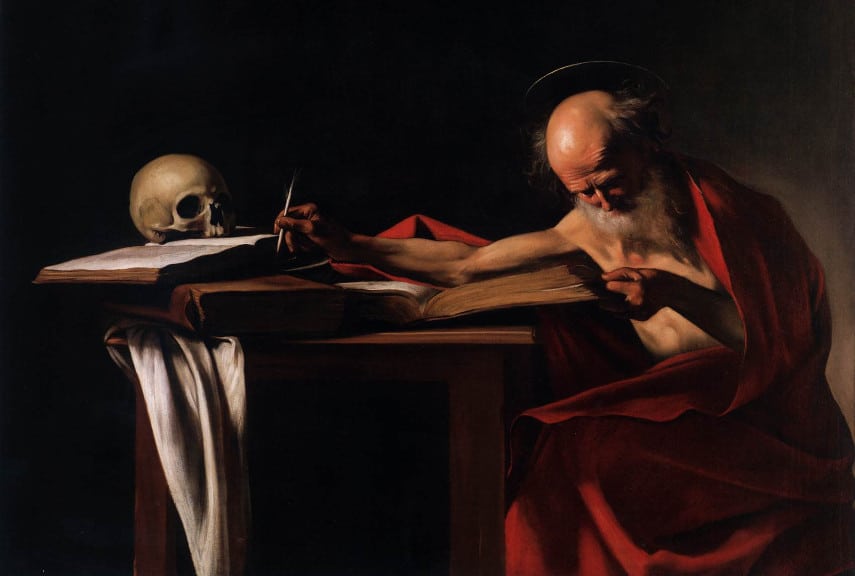
Value is the lightness or darkness of a colour. Ranges of values can be used to create unity in a painting by using similar values in different sections to create cohesion. To create unity by different subjects and objects in the painting, make sure to use the same level of value contrast throughout the painting. Caravaggio painted with the chiaroscuro technique; by using extreme light and dark values in the piece he created a sense of variety. However, he unified the subject of Saint Jerome and the objects on the desk with the symmetrical composition. The lighter values create a focal point against the dark background and the subject and object seem to mirror each other in their form. This is a great example of a composition that has used the principles of unity and variety to create balance.
Form
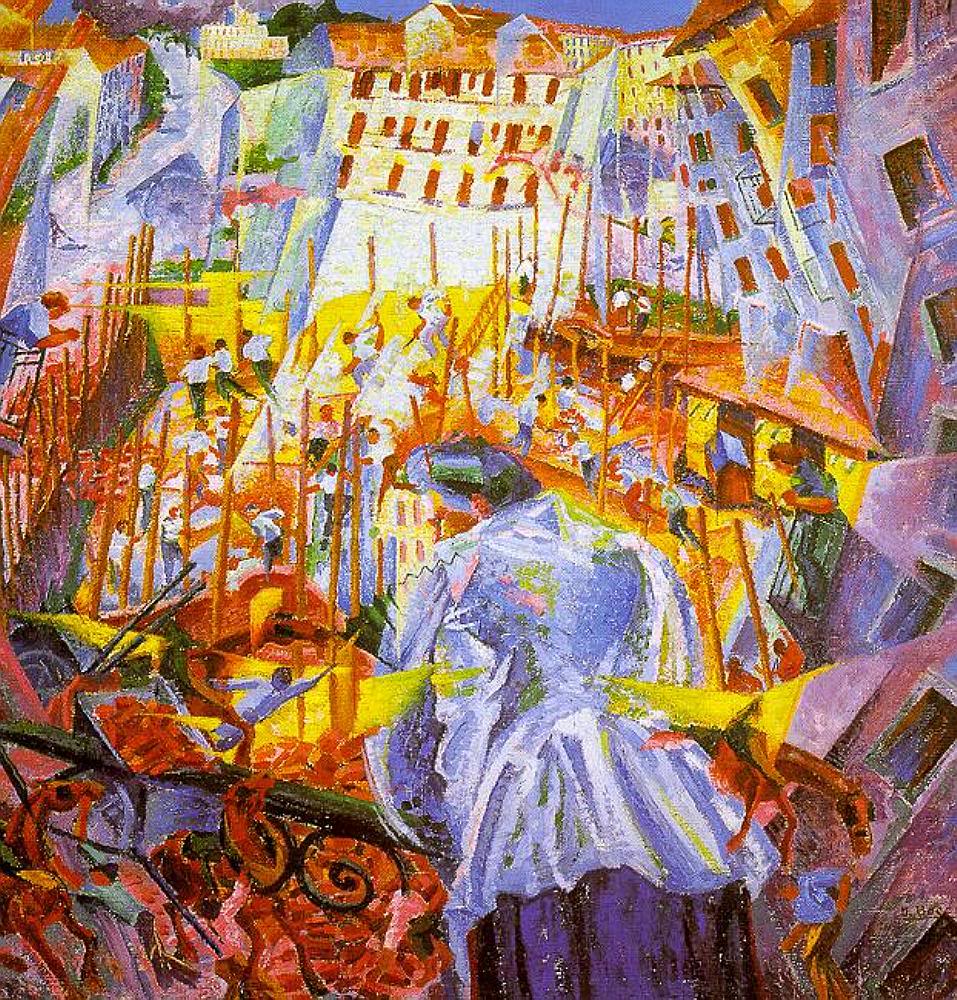
Form is the three-dimensional representation of the object in a painting, and unity can be created by connecting different forms in a painting. Unity can be achieved by creating an absence of variety through unity of form. One example of this may be in using organic forms to connect different elements, or geometric forms to unify subjects and objects. The geometric forms of the houses in this painting by Boccioni relate to the geometric forms of the courtyard. This is an example of a painting that appears chaotic and varied, however elements are unified in shape and form.
One technique that artists can use, is by to some extent repeating the form of objects and subjects in different areas of the painting. By creating patterns, tessellations, or repeating basic and complex shapes, unity can be created within the painting. Another way that artists can use the principle of unity in their compositions is by simplifying the form of subjects and objects.
Space

Finally, unity in art can also be achieved with space. Unity can be established by creating a unity between negative and positive spaces in a composition. Negative space is the area around an object, while positive space is the area occupied by an object or subject. Balance both positive and negative spaces in an artwork to create a more harmonious appearance. Elements of an artwork that are closer to one another will appear more unified than objects further away. However, for objects or subjects with large space between them, create a sense of cohesion by using similar values, colours or shapes, to tie objects together.
The clusters of flowers in this painting by Singer Sargent have a unified appearance. This is due to the lack of negative space between them. A sense of connectedness is also created in the painting by the used of muted greens and bright reds that ties the piece together. Despite the negative space between the two red bushes, the saturated and hie of the red makes them appear cohesive.
How to create unity in art
Creating unity in art is all about finding a balance between unity and variety. By unifying the appearance of certain visual elements, the artist can create a more cohesive looking artwork while still allowing individual elements to stand out within it.
Some examples of how to create unity in art include using similar techniques and application methods throughout the piece. For example, if you start painting with the impasto technique, using short, sharp strokes with a palette knife, then use this level of texture throughout the painting in different sections to create continuity.
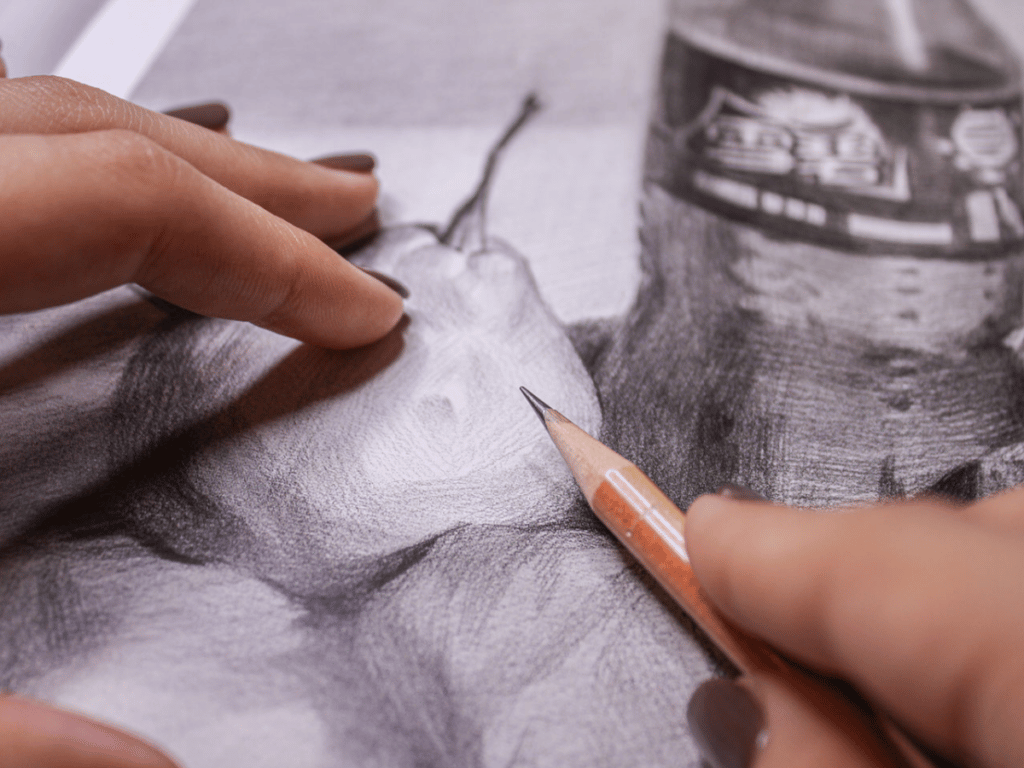
Another example is if you’re shading using the cross hatching technique, draw using cross hatching throughout all the shadows for a unified appearance. Repetition can also be used to create symmetry in a painting, by repeating general forms, shapes or colours on different sides of the artwork. A painting can appear symmetrical in either the vertical, horizontal or diagonal axis.
Artists may use methods such as creating repetition in colours used, in shapes, line thickness and form to create unity. Or they might reduce the negative space between elements that they want to appear more unified. Another method for creating unity in a piece is by simplifying the forms, colours, shapes and textures. This reduces the variety of different elements, therefore creating more unity between the elements that are placed together.
Unity and variety

Variety is the design principle that seeks to bring in elements of novelty and contrast into a painting. Variety helps to create interest and break up repetition. This allows for more interesting compositions that stand out and draw viewers into the scene. Unity and variety should be used together in order to create visually pleasing paintings with visual interest. Van Gogh creates variety with a contrasting colour scheme, but unity with the repetition of these colours and in the shapes of the flowers.
By understanding the principles of unity and variety, artists can create artworks that are both visually appealing and harmonious.
Unity and balance
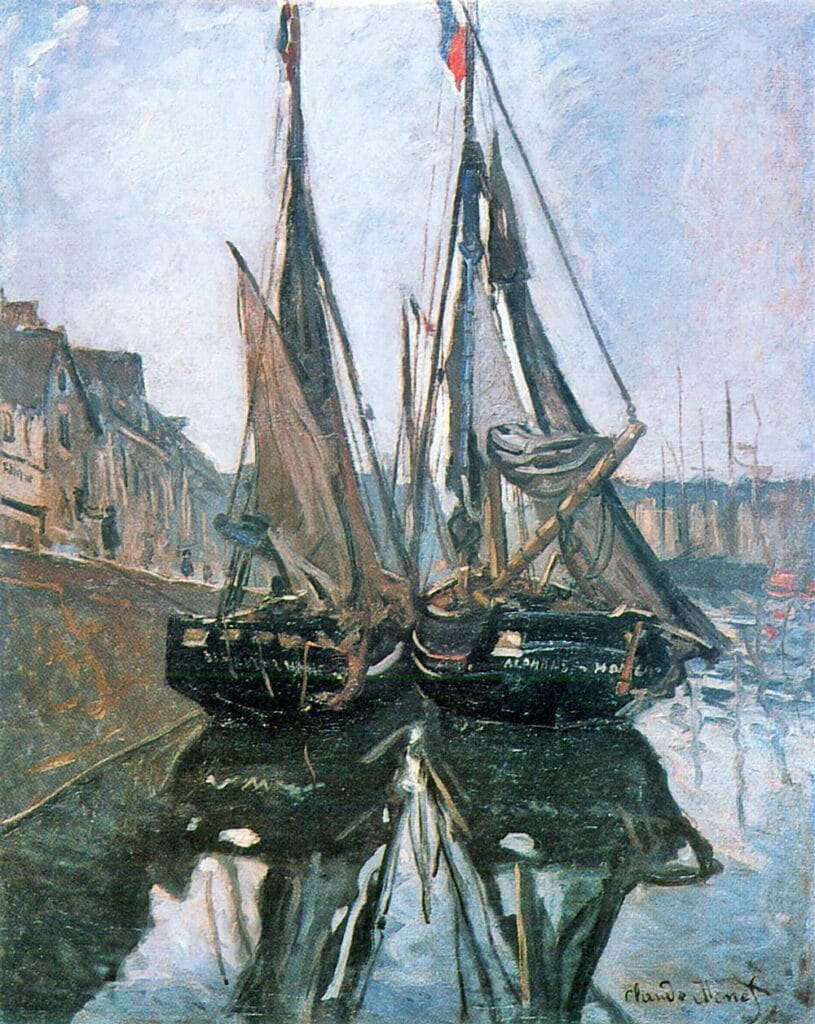
The concept of unity is closely related to balance in art. Balance refers to how the visual weight of a painting is distributed, and unity is often used to achieve balance. By simplifying visual elements and repeating visual elements, this creates both balance and unity in an artwork. Balancing the visual weight of one element with another element unifies different areas of a painting.
Unity and pattern

Like unity, balance and variety, pattern is another important design principle in art. The repetition of lines, shapes, space and colour forms patterns. The effect of pattern in art is one of unity. This is because it ties together elements and connects areas of the artwork that would otherwise be separate from one another.
Key Takeaways
Unity in art is an important design principle that helps to create harmony within artwork by creating cohesion between elements. A good artwork should have unity and variety in order to create visually pleasing compositions. Unity can be achieved by using repetition, simplifying the forms, colours, shapes and textures in a painting or drawing. When beginning to explore unity in art, it is important to become familiar with the principles of variety, pattern and balance. By understanding these design principles, you will be able to create artwork with unity and harmony.

